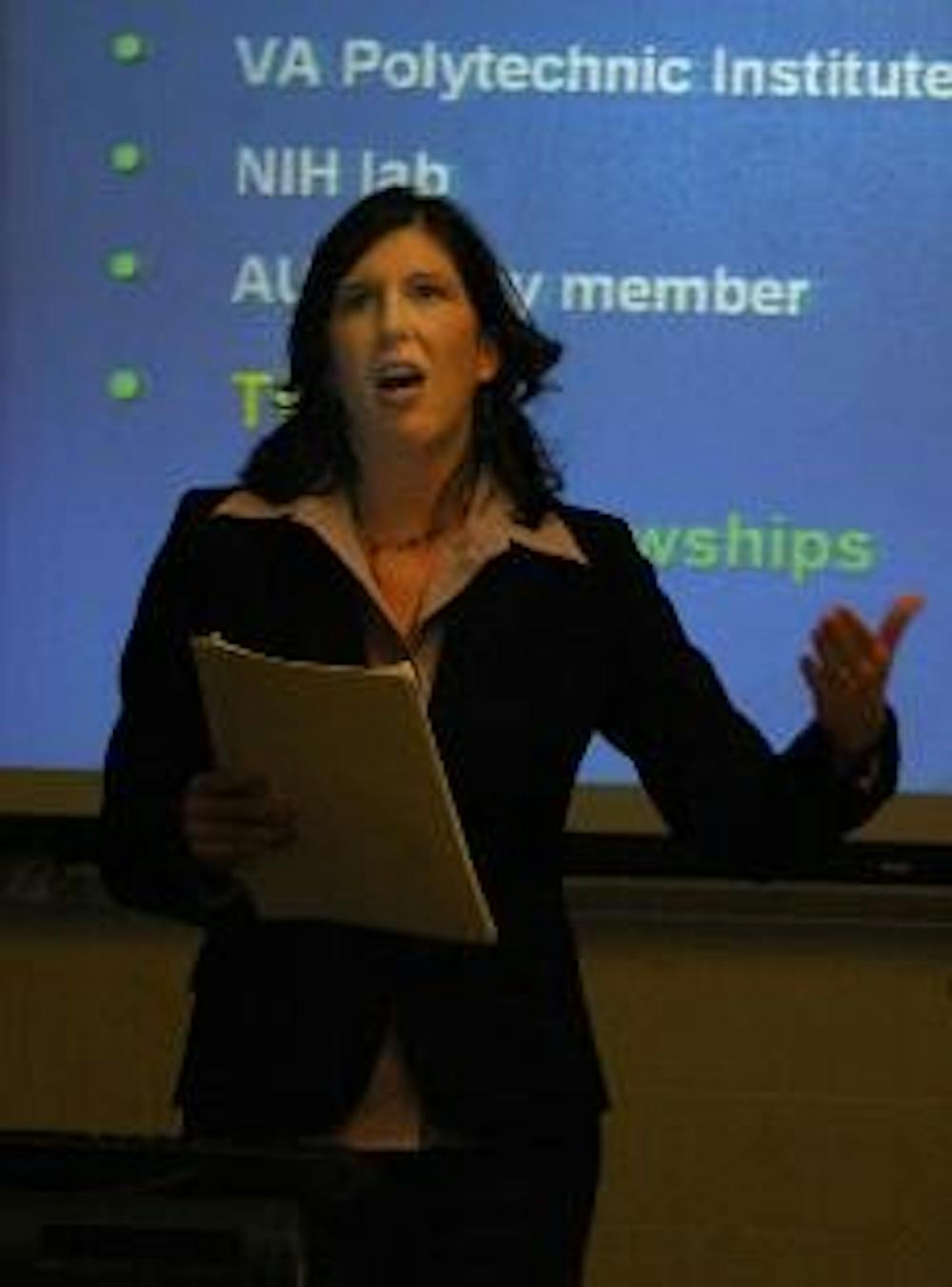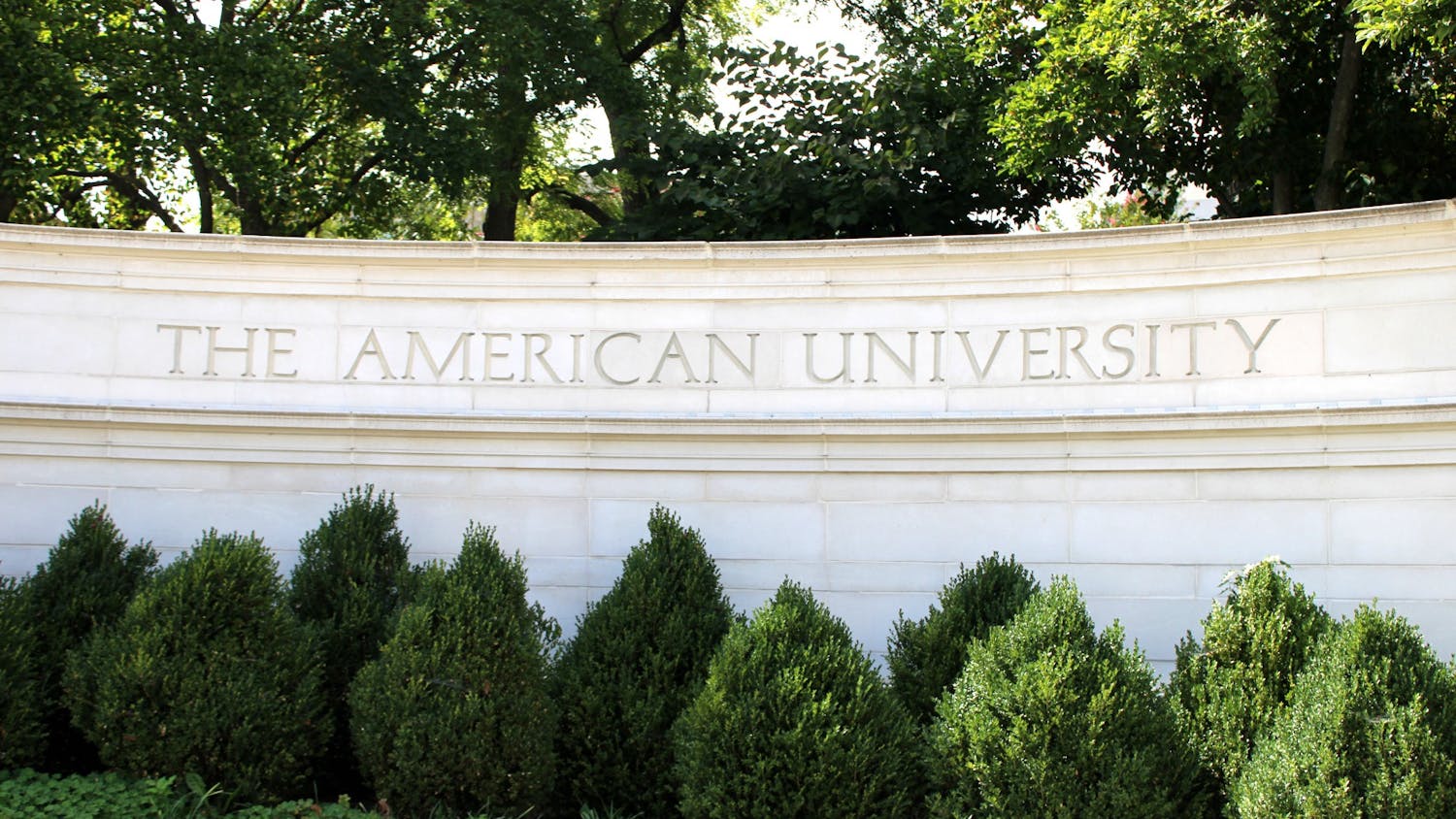A variety of speakers addressed more than 80 pre-med students about a wide array of internships and volunteer opportunities, provided tips on applying to medical school and gave advice on career options at the AU health professions seminar Friday.
Frederick Carson, pre-medical programs coordinator at the College of Arts and Sciences, organized the event, which featured 20 speakers. Carson told students applying to medical schools they need to start the registration process as soon as possible because the process is lengthy. The process includes comprising letters of recommendation, personal statements, essays and taking the Medical College Application Test, also known as the MCAT, the score of which is valid for three years.
Sarah Doaty, an AU alum and former Shanker Prize recipient for pre-medical academic achievement, is a medical student at George Washington University who underscored the importance of getting an early start.
"As an undergraduate, start to compile your personal statements and letters of recommendations, because sometimes your professors may leave," Doaty said.
Doaty said she took a week off from work to complete her application after she finished college. She applied to 15 schools, was interviewed by two and got accepted at GW.
Marla Mead, an AU alum who has been accepted to the West Virginia School of Osteopathic Medicine, said she took a slightly different approach when applying to osteopathic schools.
"Osteopathic schools are looking at the whole person, and it's not all about getting the perfect GPA. The main thing is just to be passionate about what you do," Mead said, who added that even though she applied to only five schools, she found it overwhelming.
"Choose your schools carefully, do your research and definitely shadow an osteopathic physician," she said.
Osteopathic physicians use all the tools and technology available to modern physicians with the added benefits of hands-on diagnosis and treatment, said Gina Moses, associate director of application services at the American Association of Colleges of Osteopathic Medicine.
"It is the profession of medicine for the 21st century," Mead said.
In addition to all the subjects a typical medical student needs to master, osteopathic medical students complete approximately 200 additional hours of training in osteopathic manipulative training, she said.
"It is very daunting to get into medical school, but you have alternatives," Moses said.
Other AU alums talked about their careers in public health, family medicine and Ph.D. programs. AU pre-med undergraduates also talked about their internship and volunteer experiences.
"As a medical scribe intern, you get signed up with ER physicians. You shadow them and you are also in charge of getting back laboratory and radiology tests," said Nicholas Sanborn, a pre-med student and AU Postbaccalaureate Premedical Certificate Program student.
The Postbaccalaureate Premedical Certificate Program is designed for students who have a bachelor's degree and either lack prerequisites required by health professional schools or wish to strengthen their credentials. It serves recent graduates as well as those returning to school after an extended interval.
The next health professions seminars are the essay-writing workshop Nov. 10 and the interview workshop Nov. 17. Advisers from the Writing Center and Career Center will conduct the sessions.





